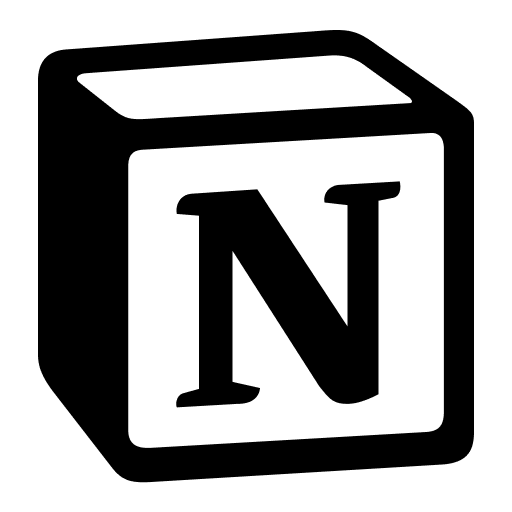Medinterpret
Helping People Receive Quality Healthcare Despite Language Barriers.
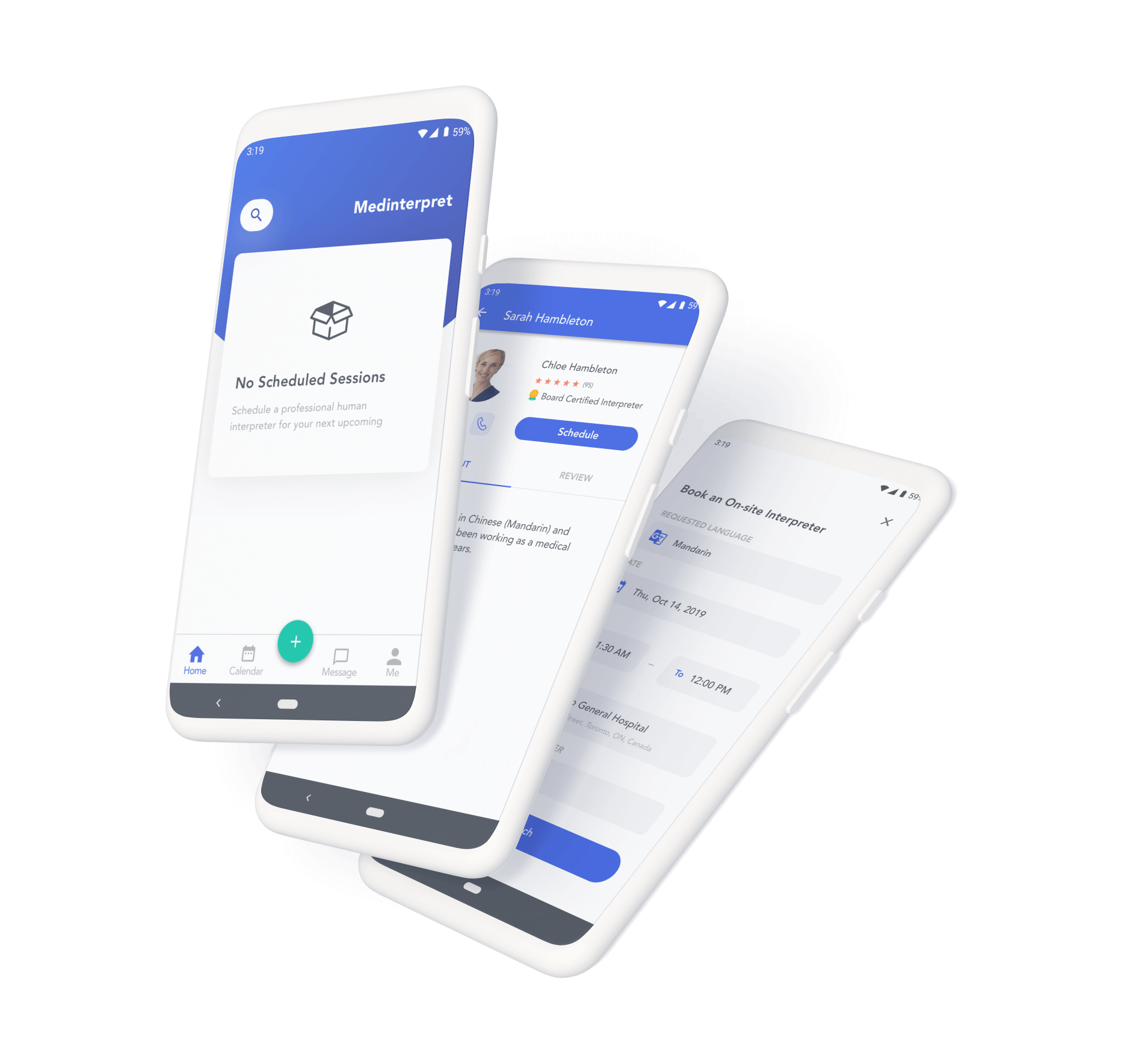
Medinterpret is a mobile application that connects patients with limited English proficiency(LEP) to professional medical interpreters.
I designed the product from end to end and completed the core experience for the app.
MY ROLE
Product Designer
User Research, Qualitative Data Synthesis, Marketing Analysis, Persona, Journey Mapping, User Stories, User Flows, Wireframing, Prototyping, Usability Testing, Branding, UI Design
DURATION
Jul - Aug 2019, 8 Weeks
TEAM
Individual Project
PLATFORM + CLIENT
Android Mobile, Academic Project
TOOLS
Sketch, InVision
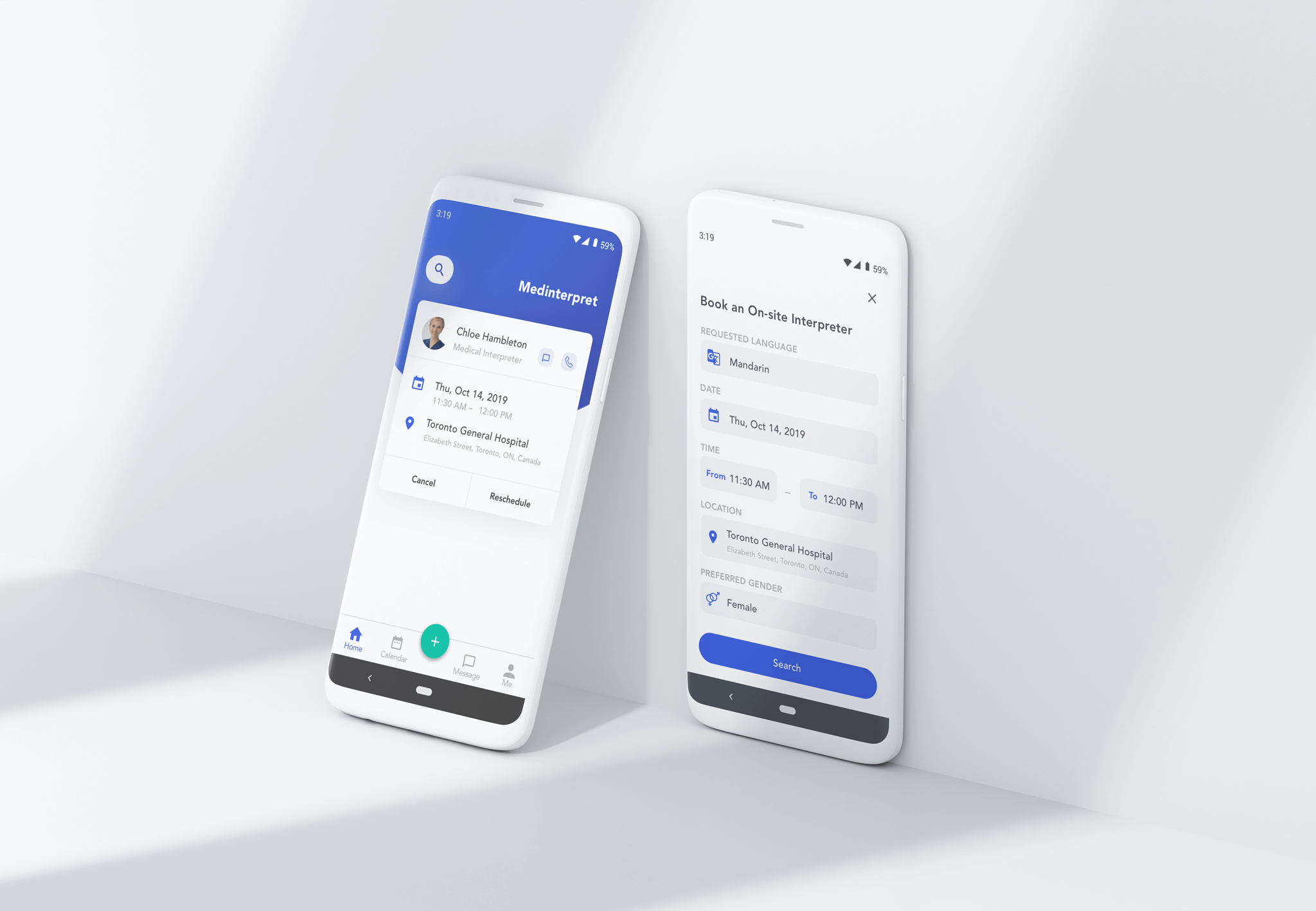
THE PROBLEM
The LEP patients are experiencing challenges in accessing quality healthcare due to language barriers.
01
The Service Delivery System is haphazard and Inconsistent
"
In Ontario, patients who speak non-official languages often do not receive language supports such as medical interpreters. Our system for delivering medical interpretation is haphazard and inconsistent.
02
Untrained Interpreters Pose Risks
"
...many of the current responses to language barriers in the health system in Canada rely on untrained and often unpaid 'volunteers'......consensus among experts in the field that untrained interpreters pose many risks to both the patient and the provider.
03
Apps can’t Replace Professional Interpreter
"
...translation apps require a degree of caution and consideration when used in health care settings, and none should replace professional interpreters.
And when providers and patients can’t communicate in the same language, it can result in poorer health outcomes and potentially lead to clinical consequences.
USER INTERVIEW
The conversations with the targeted users validated their difficulties that have been studied in the literature. The most mentioned challenges are:
01
Confusing Medical Jargon
Participants found it difficult to advocate for themselves because of English deficiency and experienced difficulties understanding medical jargon.
02
Deficient Translation Apps
Most participants have at least tried once to use mobile translation apps to communicate with healthcare providers but found them inefficient in providing accurate translation in the medical context.
03
Lack of Channels
Participants don’t know where they could find medical interpretation services because they didn’t expose to any of the services when in contact with the healthcare system.
04
Concerns About the Service
Participants expressed their concerns about the provided service such as certified qualifications, professional ethics, price, gender, reputation, schedule flexibility, past experiences, and availability for long-term contracts.
THE GAP
Many hospitals are offering free in-house interpretation service but people either do not know or they are having various concerns about the service.
Through consultation, I learned that many hospitals are offering in-house language service without charging fees. The service usually needs to be applied for by the patients themselves. However, most participants I’ve interviewed said they didn’t know it exists, or they are concerned about the provided service.
Considering the scope of this project, I decided to include the current interpretation service system from the hospitals in the final solution.
THE SOLUTION
Connecting LEP Patients to Professional Medical Interpreters
The solution is to build a platform where the LEP patients could connect with professional medical interpreters based on their personal needs. Users could make informed decisions on choosing their interpreters and have the option to communicate with their interpreters directly whenever it’s needed.
The Ideation Process - How I got there
USER FLOW
Visualizing the User Journey Path
After deciding on the solution, I mapped the detailed steps a user needs to take in order to find and schedule an interpreter, which is the core task of this app.
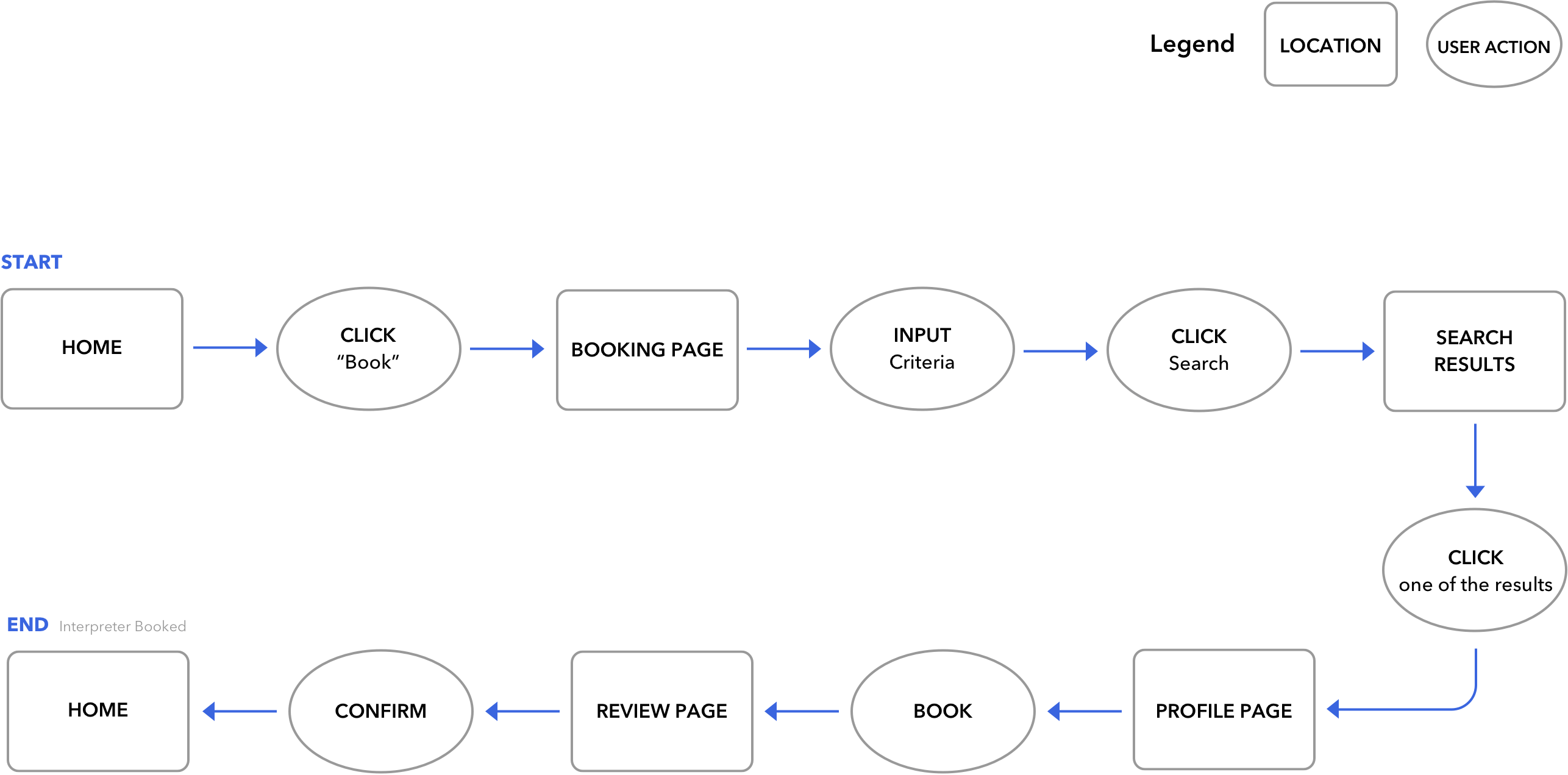
WIREFRAME SKETCHES
Exploring Ideas
I came up with two different versions, one with all the input fields and field labels listed on one screen, and the other is step-by-step questions on multiple screens. I chose the latter version because I assume it would be easier for the users to go through the input process(this was later found not to be the case).
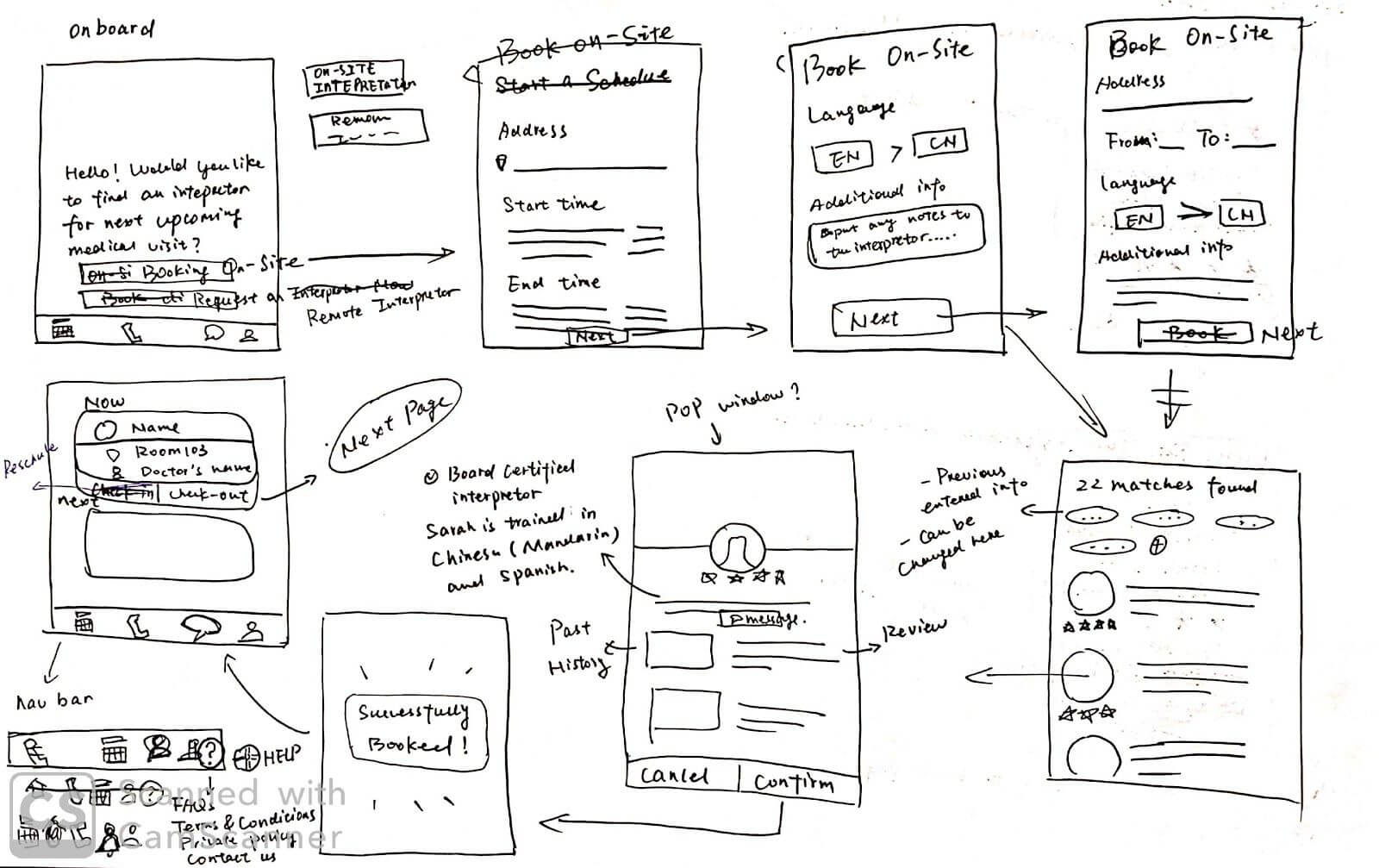
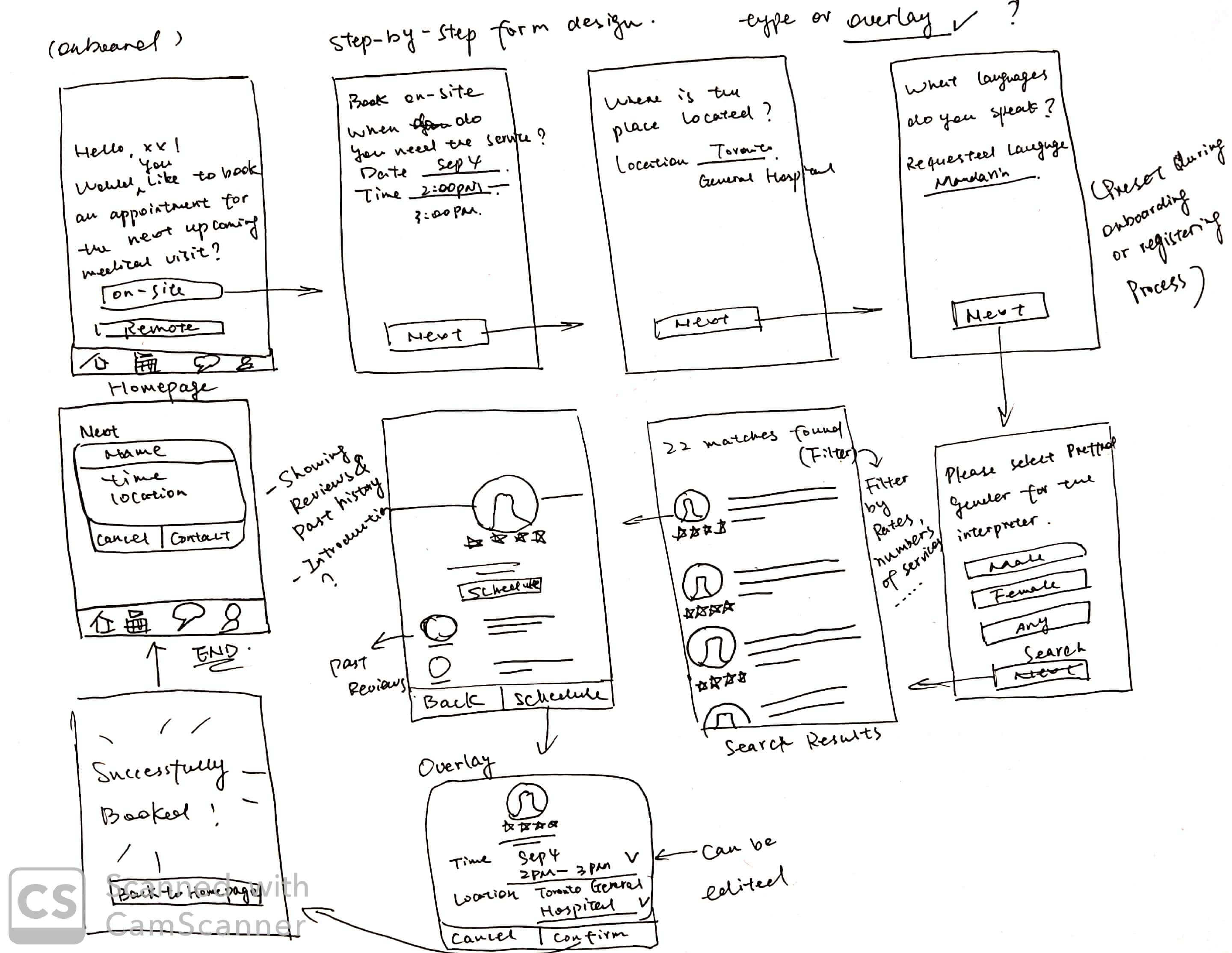
USABILITY TESTING
Validating & Iterating
Through two rounds of usability testing sessions, I was able to validate my assumptions and make adjustments based on users’ feedbacks. Here are some of the major changes:




THE FINAL PRODUCT
Introducing Medinterpret
Personalized Request
Request the interpretation service based on personal needs. Enter the details about the medical appointment and search for the interpreter that suits your need.
Informed Decision
Make an informed decision on choosing the service based on the interpreters' profile where past experiences and ratings are presented.
Direct Communications
Communicate your thoughts and concerns directly to your personal interpreter before your next upcoming medical visit and keep your interpreter informed about any changes.

PROTOTYPE
Try it Out →
The prototype is only available for the core task "schedule the interpreter"
REFLECTIONS
Thoughts on this Project
This mobile application was the first mobile app I’ve ever designed from end to end. It was a rewarding journey and I learned a lot along the way in both design thinking and technical skills.
01. Key Takeaway - Usability Testing is Vital
Usability testing is vital to validate assumptions and to inform that the design decisions made are beneficial for the users. Popular design patterns may not always be suitable for all scenarios
02. Things I Would Do in an Ideal World
• Conduct an on-site ethnography to have a deeper understanding of the current process of scheduling an interpreter/allocating an interpreter at the hospital
• Recruit user interview participants from other ethnic groups to gain more insights on users' needs
03. What's Next?
• Design onboarding experience & other features
• Explore layouts for languages that have different writing systems
• Think about the user experience from the interpreter’s user of the app
• Create micro-interactions for a more fluid experience
